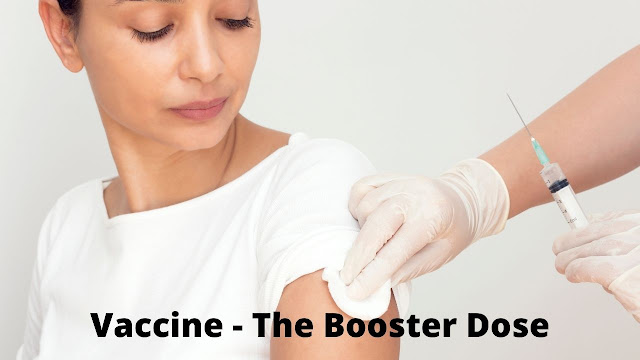 |
| Omicron - CoronaVirus |
Omicron, the most contagious variant of the coronavirus to date, has already spread to 95 countries around the world. Although this variant originated in South Africa, its main focus is now the United Kingdom. Omicron is spreading rapidly in other European countries as well. Everyone in the UK is being given a third dose of the corona vaccine or a booster dose to protect themselves from Omicron. Meanwhile, 53 percent of the country's population has been given a third dose of the vaccine.
Now the question is, will the booster dose protect us from Omicron?
According to a preliminary study by the UK Security Agency, those who took two doses of the Oxford-AstraZeneca vaccine six months ago had almost zero protection against the Omicron infection and slightly more than 35 percent in the case of the two-dose Pfizer vaccine. However, for those who have taken the third dose or booster dose of AstraZeneca or Pfizer vaccine, the defense against Omicron is about 75 to 80 percent. In other words, it is very important for everyone at risk to take Booster Dose to protect themselves from Omicron.
About 240,000 people have been infected with Omicron in the UK so far. Of these, 195 were hospitalized in critical condition and 18 died (as of December 22). Of the 195 people admitted to the hospital, 80 percent did not get any vaccine. The importance of vaccines to protect against the transmission of other variants, including Omicron, is immense. That is why booster doses are being given in all countries in the face of a new wave of epidemics.
In the case of booster doses, it is vital to choose the right dose for the third dose. This is because the reaction and the immune response are different in vaccination. In addition, there is the issue of compatibility with mix and match or heterologous vaccines.
Booster dosing has started in Bangladesh. Our country currently has stocks of AstraZeneca (Kovishield), Pfizer, Moderna, and Synoform vaccines. Most people in the country have been given the initial 2 doses of Covishield or AstraZeneca and Cinnoform vaccines. Now which will be given the third dose? AstraZeneca or Synoform or Pfizer?
A multicenter Phase-2 trial has recently been conducted in the UK to see which vaccines in the third or booster dose will be more helpful in preventing infection. A total of 6 vaccines have been tested in this trial. It has been observed that those who were given the initial 2 doses of AstraZeneca or the initial 2 doses of Pfizer, what is the immune response and side effects when given a booster dose with any vaccine. The results of this very important study were published on December 16 in the famous journal Lancet.
It found that those who received the first two doses of AstraZeneca were given a third dose, which increased antibody titers threefold, virus-neutralizing antibodies by two and a half times, and did not increase T-cell response. On the other hand, if the third dose is given with Pfizer, the antibody titer increases 24 times, the virus-neutralizing antibody increases 25 times and the T-cell response increases 3 to 4 times. The third dose of the modern vaccine gives the same results as the Pfizer vaccine. And when the third dose is given with Novavax, the antibody titer and neutralizing antibody increase 6 to 8 times and the T-cell response increases about 4 times. The third dose of Johnson & Johnson's Ad-28 increases both antibody titers by about 6 times and T-cell response by about 3 times. The third dose of a vaccine from France called "Valneva" doubles the antibody and neutralizes the antibody titer. However, the increase in T-cell response is very small. This vaccine is very similar to the Chinese Synopharma vaccine.
 |
| Omicron - CoronaVirus |
On the other hand, for those who were given the first two doses of Pfizer, the third dose with AstraZeneca increased the antibody titer and neutralizing antibody by about 5 times and the T-cell response by about 3 times. And if this group is given the third dose with the Pfizer vaccine, the antibody titer and neutralizing antibody increase by about 6 to 8 times, and the T-cell response increases by about 3 times. This means that the efficacy of the third dose, in this case, is almost equal to that of AstraZeneca and Pfizer. And the third dose with the modern vaccine increases the antibody titer and T-cell response 11 times and 4 times, respectively. In the case of Novavax, the antibody titer and T-cell response increased 3 to 4 times and 1.5 times, respectively. However, as a third dose, Valneva is very ineffective in this case.
How effective a vaccine will depend on how much neutralizing antibody and the T-cell response it produces in the body after vaccination. In the case of the heterologous booster, it is best to apply the combination that will produce the most immunogenic response to the ticker. The summary of what can be seen from the above trial results is as follows:
1. The most effective Pfizer or Moderna as a booster dose after the 2 doses of the AstraZeneca vaccine. Vaccines from NovaVax and Johnson & Johnson are also quite effective. However, the Astrazeneka or Valnever vaccine as a third dose is less effective in this case. Therefore, for those who have received 2 doses of the Oxford-AstraZeneca vaccine, it is better not to give AstraZeneca vaccine as a booster. This is how booster doses are being given in the UK.
2. AstraZeneca, Pfizer, Modern, NovaVax, and Johnson & Johnson vaccines as booster doses after Pfizer 2 dose vaccine - all are effective. However, in this case, the Val never vaccine as a booster dose is completely ineffective.
Synoforma vaccine is being widely used in Bangladesh. Synoforma and Valnever vaccines are of the same nature. Therefore, based on the above trial, it can be said that in cases where the initial 2 doses have been given with AstraZeneca or Pfizer vaccine, it is better not to use Synoform vaccine during booster dose. Because this combination may not work. As in the case of Val never. However, in cases where the initial 2 doses have been given with synoforma, the synoforma vaccine may be used as the third dose. Traditionally this method is supposed to work. In addition, mRNA vaccines such as Pfizer or Moderna may be used as heterologous doses with the initial dose of Synoform.
The above immunogenic response data were taken 28 days after the third dose. However, the trial report showed that the body's antibody titer and T-cell response increased rapidly at least one week after the booster dose. This means that the immune boost-up occurs one week after the third dose and resistance against infection is created.
Now the question is, after how many days to take the booster dose?
According to a UK study, 6 months after the second dose, there is no further resistance against omega-3 infections. He should take a booster dose as soon as the second dose expires in 6 months. The booster dose is especially important for those in their sixties or older who are suffering from a variety of ailments, such as diabetes or high blood pressure, or those who are overweight. The best time to take a booster is within 3 to 6 months of the second dose.
The right vaccine at the right time is saving lives from covid. However, there is no substitute for adhering to hygiene and using masks properly during this epidemic.
Source: Internet







.jpg)






.jpg)

Good content bhai
ReplyDelete